Talk with our local travel specialist who can help organize your trip.
Top 10 Challenging and Difficult Treks in Nepal
Nepal offers an array of trekking experiences, from the easiest to the most challenging. The most difficult and challenging treks in Nepal are indeed the most rewarding. Nepal is every nature lover's dream and a trekking enthusiast's paradise. With all the places to trek, the most challenging treks are characterized by high altitude, remote and rugged trails, tricky turns and rocky roads, extremely lengthy walks, and unusual accommodation. However, these experiences make up an adventurous and memorable trek in Nepal.
For those looking to explore new frontiers in trekking, venture out into the unknown, flex their muscles, and sprint from one ridge to the other, we have prepared the list of the most challenging and difficult treks in Nepal. The most challenging destinations are some of the bests, proven by these mesmerizing and unique treks in Nepal across Annapurna, Everest, Kanchenjunga, Dhaulagiri, Manaslu and other regions.
Following are the top 10 most challenging and difficult treks in Nepal:
1. Dhaulagiri Circuit Trek
|
Duration: |
20 days |
|
Location: |
Dhaulagiri region, north west |
|
Trek type: |
Camping Trek and Tea House |
|
Max. elevation: |
French Pass (5,360m/17,590ft) |
|
Required permits: |
Annapurna Conservation Area Project (ACAP) Permit, Trekkers Information Management System (TIMS) Card |
|
Restrictions: |
|
|
Best time to travel: |
September to November and April to May |
Dhaulagiri Circuit Trek is known amongst trekkers as one of the most challenging and enduring treks in Nepal. With the beauty of the Dhaulagiri Mountain range and the wilderness comes the rugged and off-the-beaten route. The circuit starts from Darbang village, crossing Dhaulagiri Base camp, then finally Mustang before joining Pokhara.
It offers a camping experience all the way in the remote routes and some technical treks. The difficulty of the trek is also characterized by the rocky paths, lateral moraines, glaciers, steep ascends, and long descends. Altitude sickness can also add to the challenge as you will have to cross the two high passes, French Pass at 5,360m and Dhampus Pass at 5,244m. Moreover, you would have to spend the majority of the trekking days in altitude above 3,500m.
You would require to walk about 6 to 7 hours daily on average, mostly in high altitude and rugged routes during the trek. Hence, it is particularly designed for those with a good physical physique past high altitude trekking experience and a sheer interest to walk in some of the toughest routes leading to a wonderful view.
At the end of this challenging and difficult trek, one will have witnessed the close-up views of Dhaulagiri, Annapurna, Dhampus peak, Gurja Himal, along with the charming lifestyle of Magar, Gurung, and Thakali communities.
2. Everest Three Passes Trek
|
Duration: |
20 days |
|
Location |
Everest/Khumbu region, north east |
|
Trek type: |
Tea House trek |
|
Max. elevation: |
Kala Patthar (5,550m/18,209ft) |
|
Required permits: |
Sagarmatha National Park permit, TIMS card |
|
Best time to travel: |
September to November and March to May |
Everest Three Passes trek is as amazing and challenging as it sounds with treks to three of the highest passes of Everest; Renjo La Pass (5,360m), Cho La Pass (5,420m), and Kongma La Pass (5,535m). The trek starts from Lukla, following the classic Everest base camp trail for the first few days before traversing to the Gokyo valley and branching out to Everest Base camp. Finally, the trek heads to Chhukung valley and descends back to Lukla.
Hopping from one destination to the other in the Khumbu region, there is just too much adventure in the Everest three passes trek. This is what makes this trek ever so interesting and challenging. The major difficulty during the trek can be altitude sickness, as most of the trekking days are spent in accommodations above 4000m elevation. On average, you will have to walk for about 5 hours each day. Most of the route is well-trodden, popular with clear paths, and has decent tea houses/lodges for accommodation.
Due to the high pass crossings, the Everest Three Passes trek is best for people with prior experience of high-altitude treks in Nepal.
This ultimate trek in Everest will offer you the best experience, from the up-close views of Mt. Everest and surrounding mountains to the turquoise Gokyo Lake, icy Ngozumpa Glacier, and Khumbu glacier. Moreover, interacting with the local Sherpa people understanding their culture, traditions, and lifestyle is simply wholesome.
Recommended Read:
10 Easy Treks in Nepal for Beginners
Short Treks in Nepal
Winter Treks in Nepal - The Best 23 Winter Treks
The 15 Best Treks in Nepal
3. Upper Dolpo Trek
|
Duration: |
27 days |
|
Location |
Dolpo region, north west |
|
Trek type: |
Camping trek |
|
Max. elevation: |
Nagdalo La Pass (5,350m/17,552ft) |
|
Required permits: |
Lower Dolpo Restricted Trekking permit, Upper Dolpo Restricted trekking permit, Shey Phoksundo National Park Permit, TIMS card |
|
Restrictions: |
Solo trek isn’t allowed, so you need a minimum group of two trekkers and a government-licensed guide |
|
Best time to travel: |
March, April, May, June, July, August, September, October, November |
Upper Dolpo Trek is the most adventurous and exhilarating excursion in the remote landscape of Nepal's largest and only trans-Himalayan national park, Shey Phoksundo. The trek's difficulty is characterized by the off-the-beaten tracks and long hours of trek. The isolated region with no settlements nearby elevates the challenge of the trek.
The 27 days Upper Dolpo Trek starts from the residential area of Juphal in the midwest before progressing to Phoksundo Lake. From there, the trek progresses on to Yanjer Gompa in the Upper Dolpo region, then back south to Dho Tarap valley, circuiting back to Dunai in the ancient Himalayan caravan trail.
There are many uphill and downhill walks in rugged terrains throughout the trek, which can last as long as 8 hours each day. Crossing the high passes of Nagdalo La (5,350m/17,552ft) and Sela La Pass (5,100m/16,740ft) is the most challenging aspect of this journey. All requirements need to be carried with you in the isolated area, and tents must be set up for accommodation.
Due to the length of the trek, it is physically demanding and suited for people with good physiques. Past high altitude trekking experience is an added advantage but is not mandatory for this trek.
The best attraction of this trek is experiencing the rich Bon and Buddhist culture, rare flora and fauna of the Shey Phoksundo national park, and the isolated Tibetan plateaus.
4. Makalu Base Camp Trek
|
Duration: |
24 days |
|
Location |
Makalu, North East |
|
Trek type: |
Tea House and Camping trek |
|
Max. elevation: |
Makalu Base Camp (4,900m/16,076ft) |
|
Required permits: |
Makalu National Park and Conservation Area Permit, Makalu Rural Municipality Permit, TIMS card |
|
Best time to travel: |
March, April, May, September, October, November |
Makalu Base Camp Trek is an adventure-filled trekking experience in the northeastern wilderness of the Makalu Barun National Park towards the base of the 5th highest mountain in the world. The challenge of the experience is crossing three mountain passes and reaching the maximum altitude of 4,900m/16,076ft at Makalu Base Camp.
The trek Chichila trailhead is further up Tumlingtar, after which it eventually progresses north to Makalu Base Camp, passing by Shipton La (4,229m/13,874ft), Keke La (4,170m/13,681ft), and Khongma La (3,890m/2,762ft). The second phase of the trek is easier because you will be returning via the same route. You will be traversing through rugged trails, most of which are remote and isolated.
It is a physically demanding trek that requires you to be fit enough to camp in high altitudes. On average, you will be required to walk for about 5 to 6 hours per day. Previous high altitude trekking experience is advantageous but is not mandatory for the trek.
The beauty of this trek is savoring the up-close panoramic views of the high-standing mountains of Makalu, Lhotse, Kanchenjunga, Chamlang, Baruntse, and others. Moreover, you can also witness the unique flora and fauna of the national park and might even see Red Panda and Snow Leopard if you are lucky.
Featured Trips
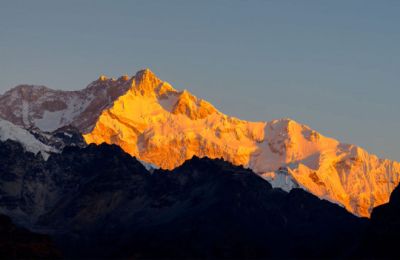
Kanchenjunga Trek - 24 days
Kanchenjunga Trek is a remarkable long remote trek into Nepal's most isolated areas of far-eastern Nepal. During 24 days Kangchenjunga circuit trek, you'll explore the area around Kanchenjunga, the third highest mountain in the world.
Inquire Now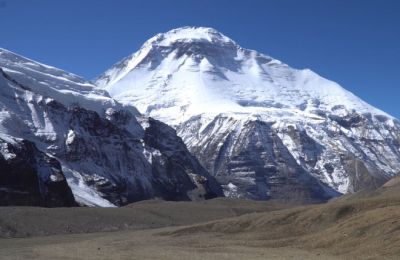
Dhaulagiri Circuit Trek - 20 days
Dhaulagiri Circuit Trek is an extremely adventurous trip around the massive Dhaulagiri range (8,167m) the world's seventh-highest peak. This is the most challenging yet most utterly beautiful off-beaten trek in Nepal.
Inquire NowWhere to travel next?
Get help from our travel specialists for holiday ideas that matches your interests.
5. Manaslu Circuit and Nar Phu Valley Trek
|
Duration: |
22 days |
|
Location |
Manaslu and Annapurna, North West |
|
Trek type: |
Home Stay and Tea house trekking |
|
Max. elevation: |
Kang La Pass (5320m/ 17,450ft) |
|
Required permits: |
Manaslu Conservation Area permit (MCAP), ACAP, Restricted Area Permit, TIMS Card |
|
Restrictions: |
Solo trek isn’t allowed, so you need a minimum group of two trekkers and a government-licensed guide |
|
Best time to travel: |
March, April, May, September, October, November |
Manaslu Circuit and Nar Phu Valley Trek take you to one of the most off-the-beat trails circling and branching out to the Annapurna and Manaslu region. The 22 days adventure takes you to high passes, rugged trails, and remote valleys. While such an experience is exciting and insightful, it can be equally challenging. There is almost no connection between these deep valleys with the modern world. The trek begins from Soti Khola, then circuits Manaslu via Dharamsala to Koto before heading to Phu and Nar villages further west and then back to Besisahar.
Circling the highest world in the tough terrain and partly isolated landscape is certainly challenging. One would require to walk for an average of 6 to 7 hours each day which may also extend up to 8 hours. Crossing the two high passes of Kang La Pass (5320m/ 17,450ft) and Larkya La (5,165m/ 16,929ft) adds to the difficulty.
Hence, you would need some physical fitness to walk the rugged terrain. You need not have high-altitude trek experience, but it can certainly help. Also, all precautions must be taken aptly to avoid altitude sickness as most of the days will be spent in altitude above 4000m and some days even about 5000m.
The most amazing attraction of the trek is witnessing the livelihood of the people living in the remote Nar and Phu Villages, the unique Bon culture, and the rich Buddhist religion. You can enjoy the views of the Manaslu, Tilicho Peak, Gangapurna, Nilgiri, and Annapurna, all to yourself in the less crowded trail. Lucky trekkers might also get to witness the rare snow leopard and Himalayan Thars in the Tibetan plateaus of Manaslu Conservation Area.
6. Kanchenjunga Trek
|
Duration: |
20 to 28 days |
|
Location |
Kanchenjunga, North East |
|
Trek type: |
Camping trek and Tea House |
|
Max. elevation: |
Pang Pema (Kanchenjunga North Base Camp) (5,143m/16,880ft) |
|
Required permits: |
Kanchenjunga Conservation Area permit (KCA), Kanchenjunga Restricted Area Permit, TIMS Card |
|
Restrictions: |
Solo trek isn’t allowed, so you need a minimum group of two trekkers and a government-licensed guide |
|
Best time to travel: |
March, April, May, September, October, November |
Known for its isolated and rugged landscape, the Kanchenjunga region offers one of the toughest treks in Nepal. Kanchenjunga trek is also one of the longest treks, reaching a maximum of 28 days crossing over 400km. Altitude, unprecedented rainfalls, isolated trails, and off-beaten tracks make this trek so challenging. In the second week of the trek itself, you will experience an elevation rise of up to 5000m.
There are three major alternative variations to the trek; one that begins from Taplejung and heads to Kanchenjunga South Base Camp/ Oktang viewpoint, the second leading to North Base Camp/Pang Pema, and the third Kanchenjunga North to Makalu Trek following the great Himalayan trail.
Crossing the three high mountain passes of Slele La (4,480m), Mirgin La (4,663m), and Sinon La (4,646m) is also a major difficulty and adventure. As the trails are not so well-trodden, they could get slippery and tough to follow in the monsoon and winter season, which should be avoided. Altitude sickness can also be common in the base camp, for which all precautions should be taken. Hence, one should be physically fit enough to walk about 7 to 8 hours each day on average in rugged trails.
Above all the challenges, the major attraction of the trail is walking through the isolated and untouched Kanchenjunga Conservation Area, up-close views of the third highest mountain in the world, and witnessing its unique flora and fauna.
7. Mustang Teri La pass and Nar Phu Valley trek
|
Duration: |
26 days |
|
Location |
Upper Mustang and Annapurna, North west |
|
Trek type: |
Tea house and Camping trek |
|
Max. elevation: |
Teri La Pass (5,577m/18,297ft) |
|
Required permits: |
Lomanthang Rural Municipality permit, ACAP Restricted Area Permit , TIMS Card |
|
Restrictions: |
Solo trek isn’t allowed, so you need a minimum group of two trekkers and a government-licensed guide |
|
Best time to travel: |
March, April, May, June, July, August, September, October, November |
Mustang Teri La Pass and Nar Phu Valley Trek explores the distant, unspoiled landscape of the west in the historic kingdom of Upper Mustang. Crossing the remote high passes and the lengthy trek duration makes this trek one of the most challenging and difficult in Nepal. The trek starts from Jomsom in Mustang and progresses north to Lo Manthang in Upper Mustang. The trek arches to the Teri La pass then branches out to Nar and Phu valley before returning south to Dharapni.
The valley is so isolated that you are restricted to travel alone and require a guide to accompany you. Altitude sickness is also a major challenge as you will reach a high elevation of up to 5,577m/18,297ft at Teri La Pass. Some of the other high passes in the trek are Nyi La Pass, Lo La Pass, and Dhi La Pass, all of which add to the challenge. Moreover, you would be required to trek for at least 5 to 6 hours each day. One must have strong physical fitness and endurance and past trekking experience, which can be a great help.
This 26 days trek offers the best chance of witnessing the Tibetan Buddhist and Bon culture and the traditional lifestyle of those living in Nar and Phu villages. Enjoying the views of the majestic Annapurna massif, Nilgiri, Dhaulagiri, and Tilicho peak is the best. What makes this trek ever so interesting to trekkers is the experience of walking in the silent Tibetan plateau tucked away from the rest of the modern world.
Recommended Read:
Mountain Passes of Nepal
8 World's Highest Mountains in Nepal Over 8000 meters
20 New Trekking Routes In Nepal
Trekking in Nepal - Ultimate Guide for all Trekkers
8. Annapurna Three High Pass Trek
|
Duration: |
24 days |
|
Location |
Annapurna, North west |
|
Trek type: |
Tea house and Camping trek |
|
Max. elevation: |
Namun La (5,560m/18,241ft) |
|
Required permits: |
ACAP, Restricted Area Permit, TIMS Card |
|
Best time to travel: |
September to November and March to May |
Annapurna Three High Pass Trek is the most challenging and difficult trek in the Annapurna region due to the three hurdles to be crossed along the trek. The high mountain passes, namely Namun La (5,560m/18,241ft), Kang La at (5,306m/17,408ft), and Mesokanto La (5,330m/17,486ft), makes this trek ever so adventurous and thrilling.
This relatively new and unfrequented trekking trail passes through the Annapurna region's major distant and treacherous routes. The 24 days long trek starts from Sikles, the foothills of Annapurna, then progresses up north, crossing the Namun La then on to Phu and Nar village. Crossing the Kang La pass to Tilicho Lake and the Mesokanto pass further west to Jomsom in Mustang.
As the first week concludes, the altitude will have risen to 4800m. Most of the trekking days will be spent above 3500m which poses a high chance for altitude sickness, particularly in the high mountain passes. Walking in the tricky route uphill and downhill, the high ridge is a challenge on its own. On average, you are required to walk 5 to 6 hours each day. The trek should only be opted by professional trekkers who have had past high altitude trekking experience and have excellent physical fitness.
Although the trek is challenging, it is equally rewarding with experiences of understanding the livelihood and culture of ethnic Gurung and Tibetan Buddhist communities. Witness the mind-blowing close-up views of the Annapurna, Manaslu, and Dhaulagiri Mountain ranges, minor avalanches from afar, and one of the highest lakes of Tilicho (4919m).
9. Dolpo To Mustang Trek with Five High Passes
|
Duration: |
22 days |
|
Location |
Dolpa, Mid West |
|
Trek type: |
Camping trek |
|
Max. elevation: |
Ghami La Pass (5,700m/18,701ft) |
|
Required permits: |
Lower Dolpo Trekking permit, Upper Dolpo and upper mustang Restricted trekking permit, Shey Phoksundo National Park Permit, TIMS card |
|
Restrictions: |
Solo trek isn’t allowed, so you need a minimum group of two trekkers and a government-licensed guide |
|
Best time to travel: |
August, September, October |
Dolpo to Mustang Trek with Five High Passes is one of the most challenging treks in Nepal's secluded high altitude mid-western region. The challenge of the trek comes from the rugged and isolated trails, elevations as high as 5,700m. The trek starts from Juphal then progresses further north to Phoksundo Lake, passing by five high passes and the highest settlement of Dho Tarap of Dolpo towards Upper Mustang.
Crossing the five high passes of Baga La (5,214m/17,107ft), Numa La (5,238m/17,185ft), Jhyarkoi La (5,360m/17,586ft), Mo La (5,035m/16,519ft) and Ghami La Pass (5,700m/18,701ft) is the major difficulty of the trek. It poses a chance of falling victim to altitude sickness if proper precaution is not taken.
The trans-Himalayan ecosystem is arid and demanding. It is undoubtedly demanding as you would require excellent physical fitness to walk 6 to 7 hours on average, pass high altitude trekking experience, enough time, and budget. Most of the Dolpo and Upper Mustang trail is uninhabited, which means that camps need to be set up for accommodation. Hence, you need to adapt to minimal resources during the trek.
Despite the immense challenge of the trek, one gets to experience the Tibetan plateau and the snow-capped Mt. Dhaulagiri, Mt. Nilgiri, Annapurna, Kanjirowa, and Dolpo Himal in the backdrop. Moreover, witnessing the unique flora and fauna of the large Shey Phoksundo National Park and the clear Phoksundo river is another great experience.
10. Limi Valley Trek
|
Duration: |
21 days |
|
Location |
Karnali, Mid Western |
|
Trek type: |
Tea House and Camping trek |
|
Max. elevation: |
Nara La Pass (4,620m/15,157ft) |
|
Required permits: |
Simikot Rural Municipality permit, Limi Valley Restricted Area Permit, TIMS card |
|
Best time to travel: |
April, May, September, November |
Limi Valley Trek is among the most distinctive experiences in the hidden valley of the mid-western region of Nepal that poses to be a challenge due to its remote nature. The newly opened trek begins from the hustle and bustle of Simikot progresses on to Hilsa, then further up the Tibetan border in Til village and Limi Village. In the second half of the trek, the trail heads south to the Talung valley before rejoining at Simikot.
One needs to be physically fit enough to walk for an average of 6 hours each day. You will also have to cross the high passes of Nara La (4620m/15,157ft), Langdogd (4,550m/14,928ft), and Nyalu La (4,990m/14,000ft), which is a challenging part of the trek. Although difficult, it is not required to have past trekking experience. On the other hand, the accommodation is either in a few distant lodges or camping.
The 21 days trek escorts you along the ancient caravan trail to a life away from modernization, rich in Bon religion that predates the Buddhist religion. Views of Mt. Kailash, Api, Kanjirowa, and Saipal near the Tibetan border are fascinating. One needs to take this trek due to the unique experience of traversing through the ethnic Tibetan Buddhist communities in the remote villages that have a rich ancient craft and culture represented by their gompas.
Featured Trips
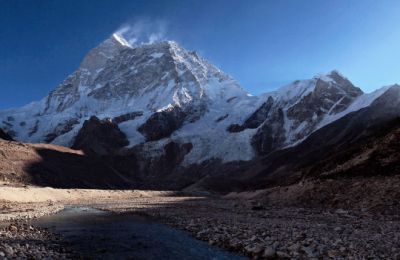
Makalu Base Camp Trek - 24 days
Makalu Base Camp Trek falls under the choice of erudite trekkers. It takes you to the fifth highest mountain base camp in the world.
Inquire Now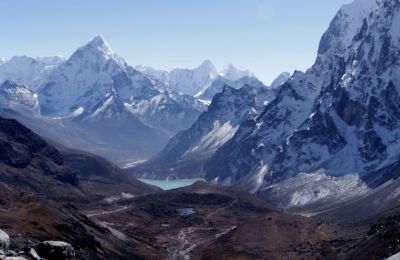
Three Passes Trek - Clockwise - 20 days
The Three Passes Trek crosses the three major high passes, Renjo La Pass, Cho La Pass, and Kongma La Pass of the Khumbu region. It also offers a memorable and ultimate trekking experience in the high Himalayas of Nepal.
Inquire NowWhere to travel next?
Get help from our travel specialists for holiday ideas that matches your interests.
Other Challenging and Difficult Treks in Nepal
Beyond the above-mentioned treks, there are other equally challenging and difficult treks as well which are worth mentioning. Please check the following to know more:
Makalu to Sherpani Col High Pass Trek
Spanning for a total of 18 to 28 days Makalu to Sherpani Col High Pass Trek is one of the lengthiest and the most challenging treks. The trek in the eastern region of Nepal covers all the way from Makalu to Everest with the highest altitude of 6135m at Sherpani Col Pass. As part of the great Himalayan trail, the route passes through some treacherous ridges, glaciers, high passes, and base camps of mountains. This is certainly not a trek for an average person and would require some form of experience in high-altitude trek and great physique.
Rolwaling Tashi Lapcha Pass Trek
The Rolwaling Tashi Lapcha Pass Trek is a one-of-a-kind difficult trek in the Rolwaling valley and the Khumbu region in the northeast of Nepal. The trail passes by moraines, scattered Sherpa villages, glaciers, ridges and one of the toughest high passes of Tashi Lapcha at the elevation of 5755m between Rolwaling and Khumbu. At the highest elevation of 6272m at Pharchamo this is one of the toughest ascend that requires great strength and courage. There can be high possibilities of altitude sickness which is why precaution must be taken throughout the 22 days trek.
Everest Amphu Lapcha Pass
One of the most adventurous and challenging treks in Nepal, the Everest Amphu Lapcha Pass spans across the Khumbu region and the Honku Valley in the northeast of Nepal. The most challenging part about the 19 days trek is perhaps crossing the Amphu Lapcha pass which is the highest altitude pass at 5,845 m. There is also a possibility of summiting the Mera Peak on the way which many trekkers opt for, but it can be excluded as well. You would require to walk a minimum of 4 to a maximum of 10 hours which can be challenging for most trekkers, hence prior experience is required.
Ganja La Pass Trek
One of the difficult treks in the Langtang region of Nepal is the Ganja La Pass trek which takes 15 days to complete. The trek passes through the scattered Tibetan Buddhist and Tamang settlements in the Helambu and Langtang region. What makes this trek so challenging and difficult is the rigorous walk to crossing the snow-covered Ganja La Pass (5130m). Moreover, you will be staying in the tented camps during the windy nights at the high altitude. Although it is great to have prior experience, it is not mandatory for this trek.
Great Himalayan Trail
The Great Himalayan Trail, an initiation of the Nepal Government is a combination of treks across the east to west of northern Nepal. It is not a single trek but is a mixture of many treks spanning across Kanchenjunga, Makalu, Everest, Rolwaling, Langtang, Ruby Valley, Manaslu, Annapurna, Dolpo, Mugu, and Far west.
Considering that it is the most challenging ordeal, it has only been completed by a handful of people who have great enthusiasm, ambition, strength and experience over their backs. This is not an easy task for any trekker. It crosses altitudes over 6,000m throughout the trek and takes about 5 months to complete. There are numerous high passes, settlements, glaciers, moraines, tricky turns, ridges to cross along the trail which is why it tops the list of the most difficult and challenging treks in Nepal.
Conclusion
Nepal is filled with adventurous places to travel and trekking to the most challenging places is a thrilling experience. Before taking any of the above treks in Nepal, it is wise to fully understand and prepare for the trek and best to take suggestions from experts. As it is, the treks mentioned above are challenging in nature due to the length, altitude, and geography. Hence, to make it easier, it needs to be organized by experts.
There are many local agencies in Nepal that might be able to offer trekking packages, however, you need to select companies with vast experience and professional support. A company like Third Rock Adventures with over two decades of experience in trekking to all regions and the highest altitudes has the ability to organize well-managed treks.
If you wish to opt for any of the above-mentioned challenging treks then feel free to get in touch with us. Know more from our professional team and plan for a perfect jaw-dropping experience in Nepal.
- Written by: Naba Raj Amgai
Updated: Apr, 6, 2023

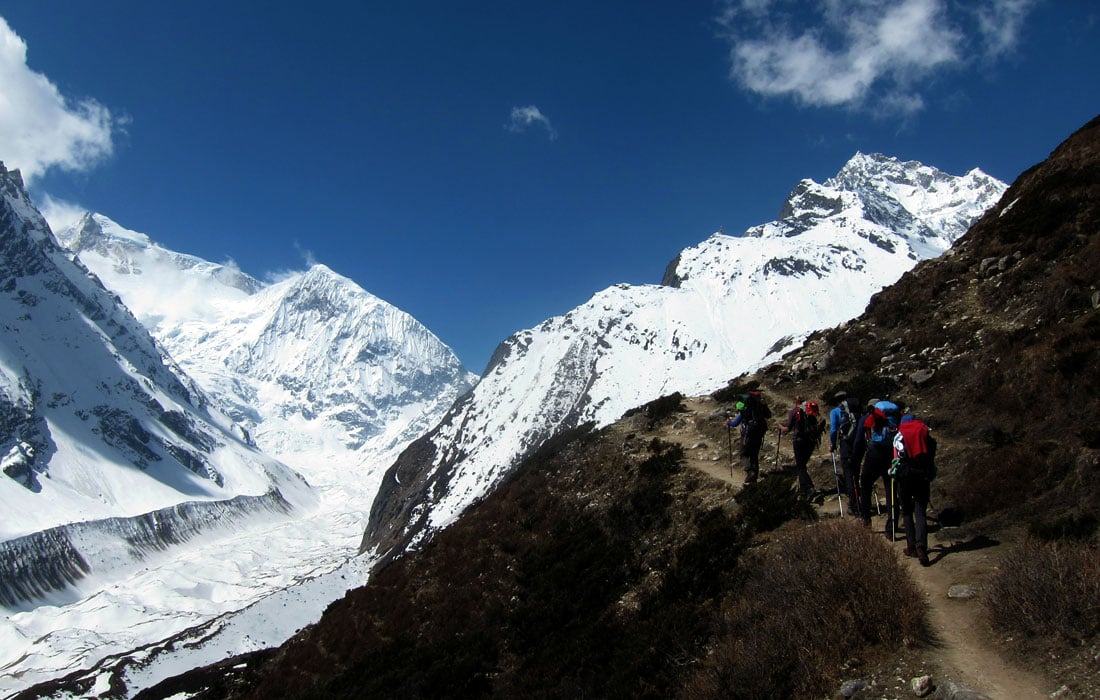












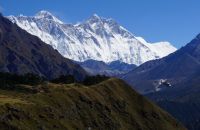
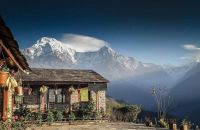
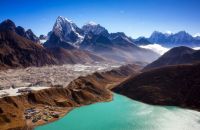
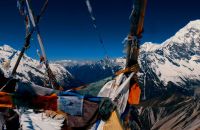
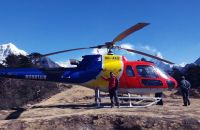
















Recent Comments
Did Kanchenjunga trek in 2018 and loved it every single day. Every day was challenging and unfolding the beauties of the region. I wasn't allowed to do it independently back then, and it was for a good reason. You may get lost since it is less explored.